Ahhh, Venice. There’s nowhere in the world quite like it. Floating in a gondola down a serene canal lined with candle-lit restaurants, listening to the gondolier serenading with gentle romantic tunes.
That’s how you imagined Venice too?
I hate to burst that bubble, but with over 20 million tourists thronging to this island each year, Venice is not exactly serene or relaxing. Sure, it’s an engineering miracle, encircled by calm lagoon waters, but it’s also the most expensive city in Europe for tourists and a royal pain in the ass to get around. However, there’s no denying it’s magical allure that simply must be experienced at least once in a lifetime.
I visited Venice to see if it lives up to the hype and to explore the epicentre of the Venetian Empire that thrived during the Middle Ages and Renaissance. Here’s my handy 2 day itinerary that covers Venetian museums, icons like Rialto Bridge and Doge’s Palace, and then spends a day away from the maddening crowds touring nearby islands Murano and Burano.

Getting Around Venice
While it comes as no surprise that boats are the only way to get around Venice, I couldn’t help thinking the public transport system was more complicated than it needed to be.
Water taxis and gondolas charge through the roof so I recommend avoiding those in favour of a water bus (vaporetto). Tickets cost a flat rate of €7.50 for 75 minutes validity (in any direction, single trip) and can be purchased with cash or credit/debit card from automated ticket machines near all ferry terminals. The touch screen interface allows you to change the language to English, so it’s fairly easy to follow. Just don’t forget to validate your ticket by holding it against a validation machine and waiting for the green light (next to the small gates), otherwise you could be looking at an on-the-spot fine of €60 or more.
Venice travel tip: If you're flying into Venice Marco Polo Airport (VCE), 7.5km from the city centre, or Treviso Airport (TSF), 25km from the city centre, consider booking Venice airport transfers in advance for extra peace of mind.


Tip: If you plan on using the water bus quite a bit, it’s €20 for 24 hours or €30 for 48 hours.
We stayed in the most central sestieri (zone) of San Marco, which is accessible via water bus from Santa Lucia train station - where most (non-cruise ship) tourists arrive. Our Airbnb host instructed us to catch the red “line 2” water bus and disembark at San Marco - Giardinetti (not San Marco - San Zaccaria). What we didn’t know is that there are 2 different “line 2” water buses. Well, more specifically, one ”line 2” water bus and a ”line 2/” water bus with separate boarding platforms and different stops. Although it may look like “line 2” is a singular water bus line, it is not. You cannot get to the same stops on each similarly named line. Seriously, who designed this?
To avoid confusion, I recommend downloading the AVM Venezia app (iOS, Windows Mobile). Sorry fellow Android users, we’re out in the cold. That way you can buy and validate tickets online, search timetables, and schedule your route by entering the exact departure and arrival points. The schedule produced by the app is much easier to understand than the printed spaghetti-inspired maps at the ferry terminals. Alternatively, Google Maps does a reasonable job on the public transport in terms of directions, but I found the timing isn’t particularly accurate.

Warning: While Google Maps is somewhat handy in Venice, the narrow laneways can often wreak havoc on the accuracy of a phone’s GPS signal. The app also doesn’t cater to a some of the small, covered laneways, so any provided directions should be taken with a grain of salt.
If you’re doing a rail trip around Italy, I suggest only taking minimal luggage into Venice. Dragging big suitcases on small streets ain’t fun. You’re better off leaving your unnecessary bag/s in storage with this handy service. Your sanity (and back) will thank you for it.
Day 1
9am – St Mark’s Basilica and Bell Tower
St Mark’s Square (Piazza San Marco) is the beating heart of Venice. Inside is the exquisite St Mark’s Basilica and Bell Tower as well as several street performers and souvenir stalls. The square is lined with restaurants and cafes, and a collection of museums.
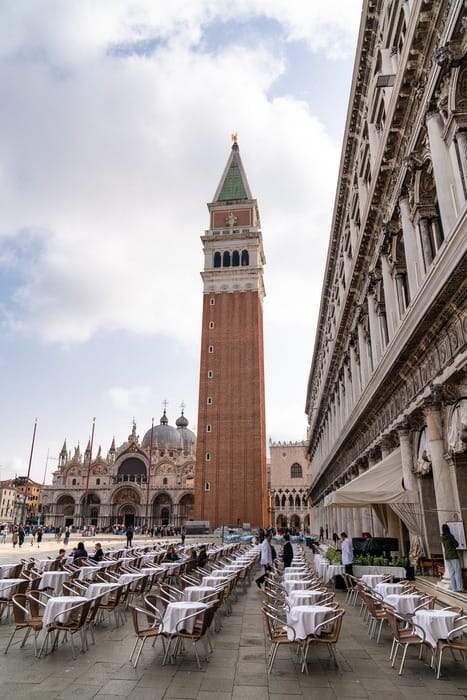

The magnificent St Mark’s Basilica can’t help but catch your eye with its glistening gold-lined exterior and vibrant mosaics. Most Italian churches save the ostentatious decorations for the interior, but not “the Church of Gold”. It’s a demonstration of the extreme wealth generated by the Venetian Republic thanks to their trade prowess.
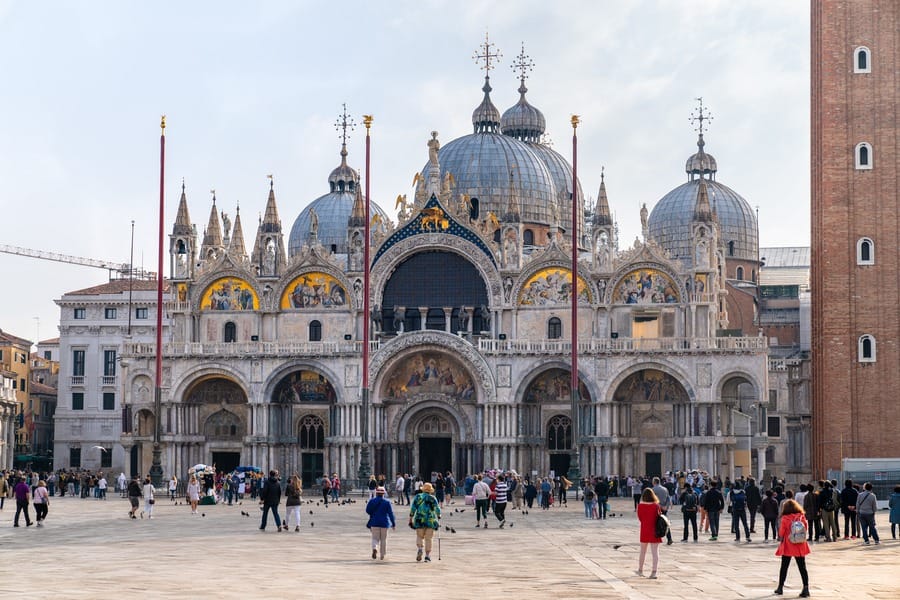
Like my heart, the basilica sparkles with golden beauty on the inside, and is filled with patience as queues to enter often require 45 minutes. I recommend booking fast-track tickets online in advance. The online reservation service is available from 1st April to 2nd November each year.
I recommend roaming the square around 8am when it’s quiet and peaceful, before the crowds descend. That’s when I captured most of these photos.
11am - St Mark’s Square Museums
After visiting the church, I walked over to the Correr Museum, the first on my Venetian museum hitlist. I’d pre-booked tickets online for the St Mark’s Square Museums which include the Correr Museum, Biblioteca Nazionale Marciana, National Archaeology Museum, and Doge's Palace.
Tip: Ticket order confirmations must be printed at home then scanned at your first museum in exchange for paper tickets.
It turns out the Correr Museum, National Archaeology Museum, and Biblioteca Nazionale Marciana are located in the same building. Talk about efficient! You simply enter once and keep walking through long corridors lined with exquisite artwork and fascinating artefacts, remembering to pick up your jaw every so often. It wasn’t really clear when one museum turned into another, but we could kind of work it out from the nature of the exhibits.
The Correr Museum displays lifestyle and culture exhibits from the Venetian Republic at its prime including exquisite ballrooms, halls, and chambers decorated with intricate artwork, personal belongings of Venetian aristocrats, coin collections, drawings, models, and pieces of Venetian warships.
Exhibits within the Biblioteca Nazionale Marciana (National Library) focus around the printing revolution from 1450-1500 AD. The partially-digital exhibition includes stories of how the printing press was developed and utilised and how printed books changed the lives of everyday people. One display was a list of 38 books owned by Leonardo da Vinci.
The final exhibits were in the National Archaeology Museum and included ancient Greek and Roman sculptures, statues, and funerary seals, coin collections, and ceramic artifacts.
1pm – Lunch
Restaurants inside St Mark’s Square tend to be overpriced and underwhelming so I recommend wandering down side streets to find a low-key osteria, like Osteria Enoteca San Marco, to feast on delicious homemade pasta.
2pm – Doge’s Palace (Palazzo Ducale)
After lunch, walk back through St Mark’s Square to Doge’s Palace and enter with the same museum tickets you used earlier.
Doge’s Palace is a gothic fortress that dates back to 1340 AD, although the compound has been destroyed by fire and reconstructed several times throughout the centuries. It served as the Venetian Republic’s administrative offices including law courts, housed official meetings and celebrations, and was also the residence of the Doge, the highest authority in the Venetian Republic.
Thankfully, the 4-story palace includes frequent signposts confirming the intended route. Inside are exquisite courtyards, golden stairways, and grand halls covered in floor-to-ceiling Renaissance paintings. The scale and detail of the extravagant artworks is really worth the #omg hashtag.

Visitors can see the halls where criminals were tried and sentenced, then follow the route the convicted would have taken across the Bridge of Sighs to their new home in the dark and gloomy dungeons. The Bridge of Sighs is an enclosed concrete bridge with barred windows that prisoners are said to have looked out of and sighed at their last view of Venice before imprisonment. I tried a few deep, breathy sighs to get in the mood. It felt good.


3:30pm – Rialto Bridge
Rialto Bridge is a 10-minute walk from Doge’s Palace and the oldest bridge over the Grand Canal. It’s now one of the most recognisable symbols of Venice, along with carnival masks that can be found pretty much everywhere in Venice.
Rialto Bridge has been rebuilt and renovated several times since its original construction in 1181 AD. During the 15th century, shops were built along the north-eastern ramp of the bridge, creating a shopping tradition that’s still alive today. While the original shops were most likely food stalls, the stores today sell mainly jewellery and souvenirs.
No trip to Venice is complete without crossing the Rialto Bridge and stopping for a photo or two. Be warned, it does get very crowded, so keep a close eye on your pockets.
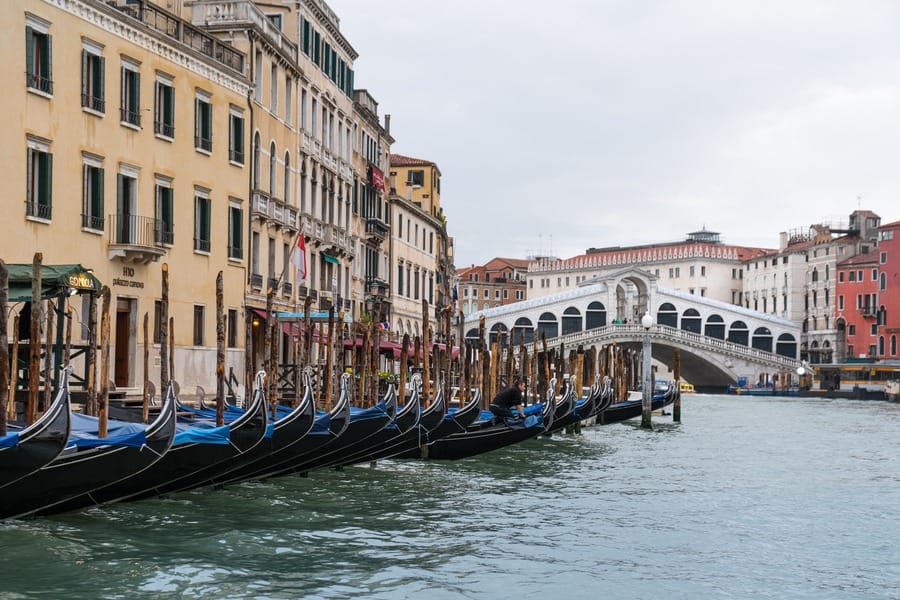
4pm – Wander around Venice to Explore its Charm and Boutique Shopping
The best way to explore Venice is to simply wander through its side streets and narrow alleyways. You’re bound to discover tiny picturesque bridges, boutique fashion stores, and most importantly… gelatarias. I recommend taking an hour or two to meander – the further, the better. The street named Fondamenta Della Misericordia, 11 minutes’ walk north of Rialto Bridge, is amongst the prettiest.
If the enticement is too strong, squeeze in a gondola ride, but only if you’re able to conjure an eye-watering €80 for a 30-minute tour. You can pre-book tickets online with Viator.
Get onto the iconic Grand Canal with the white #1 water bus heading south back towards San Marco, where you’ll find dinner.
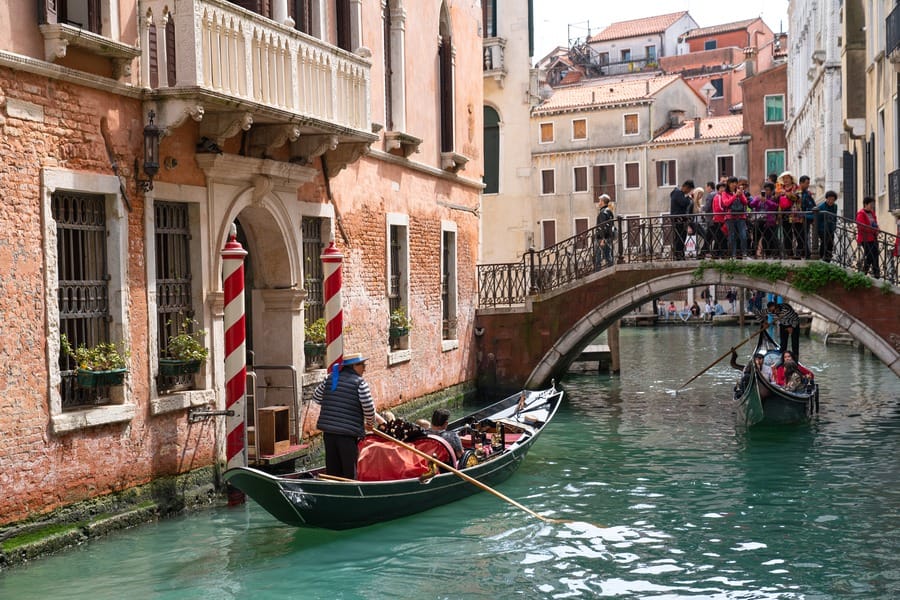
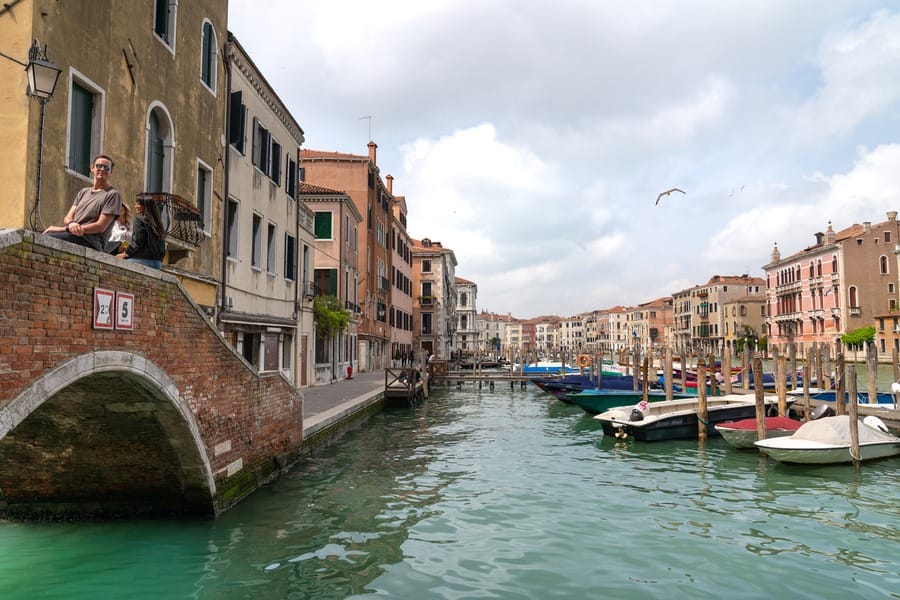
6pm – Dinner
I recommend dining at Restaurante la Feluca, a traditional Venetian eatery specialising in fresh seafood. The best restaurants in Venice tend to be fully booked around dinner time so you should choose a dinner restaurant earlier in the day and call ahead to book a table. This one will definitely require a reservation but you can do so on their website as well.
Foodie tip: If you find a mostly empty restaurant in Venice at dinner time, stay away. As a back-stop I suggest checking the restaurant’s Google Map score rating. Anything less than 3.9 (out of 5) is a tell-tale sign of sub-par food.
Day 2
Breakfast tip: If you’re staying in an Airbnb apartment, the most affordable breakfast will be one that you make. There are over a dozen small supermarkets scattered around Venice, the most popular chains being Coop and Despar. DIY cereal, muesli or eggs will go a long way to making your Venice trip affordable.
8:45am – Get away from the crowds on a 5-island tour
The best way to feel the authentic Venetian life is to explore the quieter and less-touristed islands nearby. Many of these islands have a single speciality, some grow artichokes, others produce wine, one makes lace, and famous Murano produces artisan glass.
To experience the best of the Venetian islands, I booked Take Walks’ Full Day Venice Island Boat Trip. We met our guide, Daria, at 8:45am and walked to the Nove Ferry Terminal, where our boat was already waiting. As we glided along the smooth waters to our first stop, Daria shared stories on the history of Venice, islands we passed, and the lifestyles of modern Venetians. We were the only passengers on the day of our tour (as it’s a brand-new tour), but the semi-enclosed boat can fit up to 20 people.
The first stop was San Francesco del Deserto, a quiet island containing a monastery dedicated to St Francis of Assisi, who visited the island in 1233 AD. The monastery is now home to 5 Franciscan friars, one of whom gave us a short tour of the monastery including showing the building’s Roman foundations and a chapel where St Francis is said to have prayed. Although the humble friar couldn’t speak English, he cheerfully shared stories of the monastery’s origins which Daria kindly translated for us.
Visitors are welcome to place a donation in the monastery’s offering box to support the friars but there’s no obligation. Take Walks provides a small donation to cover the visit.
Our next stop was Mazzorbo, for a wine tasting at boutique vineyard Venissa, which produces wine from the grape variety dorona, meaning “golden”. As the name implies, dorona is golden in colour and unlike most white wines, can be kept for up to 15 years. This medium-bodied wine released a bold aroma, almost like a sherry, but tasted drier with a mildly salty aftertaste. It was absolutely delicious, but it’s not an everyday wine. The vineyard cultivates 4,000 dorona vines which produce 4,000 bottles per year. Each bottle is adorned with a pure gold leaf label applied by hand and is then hand-engraved with its unique number out of 4,000. Yep, it’s a limited-edition wine, so it’s no surprise a small bottle costs €140.
After our tasting and watching a short video on Venissa’s wine production, we walked through the vineyard and across a bridge to reach our next destination, Burano. Burano is pretty much everything I’d hoped Venice would be. The picturesque island is full canals lined with colourful houses in hues of pink, purple, yellow, and blue, restaurants with friendly waiters waiving you inside, and shops selling hand-made lace – the island’s specialty.
We stopped at the Burano Lace Museum where Daria gave us 2 hours of free time to visit the museum, enjoy lunch, and shop at the many stores selling lace, clothing, textiles, homewares, and souvenirs.
Exhibits inside the Lace Museum explain the history and production process of Burano lace and show examples of different lace varieties. We even saw a sweet older lady embroidering lace by a window.
After our museum visit, we followed Daria’s recommendation and had lunch at Da Primo, a homey restaurant specialising in seafood and homemade pasta. They even offered gluten-free pasta for my wife.
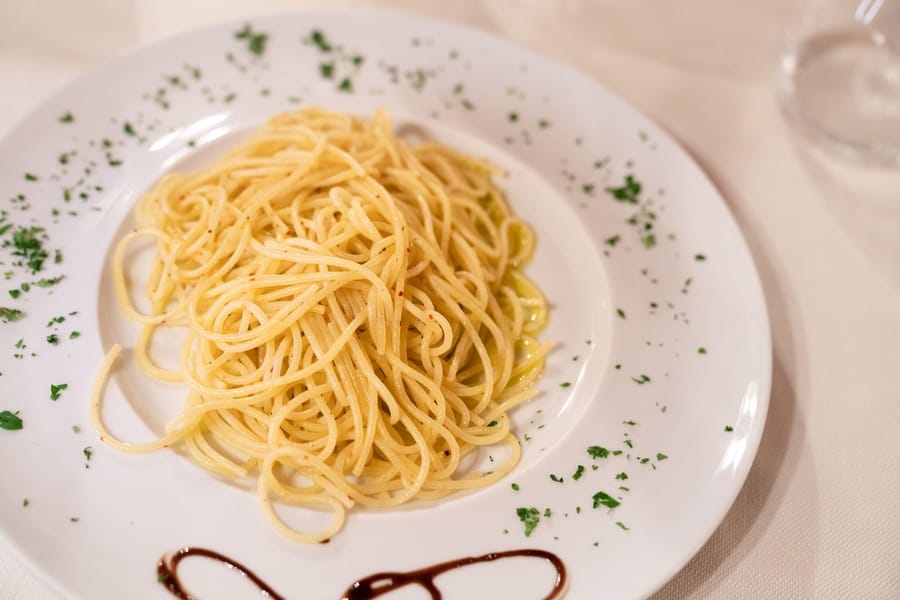
Our next stop was Torcello, the first island inhabited in the lagoon and home to Venice’s oldest church. The plan was to walk about 10-minutes along a canal until we reached the Venetian-Byzantine basilica, but it was pouring with rain so we opted to retreat back to the boat instead. If you do wish to visit the basilica, entry costs €5 per person and is not included in the tour price.
Our last stop was Murano, the island home to respected glassmakers since the 13th century. According to Daria, some glass factories were originally located in the historic centre of Venice but moved to Murano to keep fumes and risk of fire away from the population. We visited Glasbläserei Estevan Rossetto where we watched a short glassmaking demonstration by a master craftsman. I was in awe as he effortlessly formed a small vase and then a horse statue out of molten glass in 2 minutes flat.
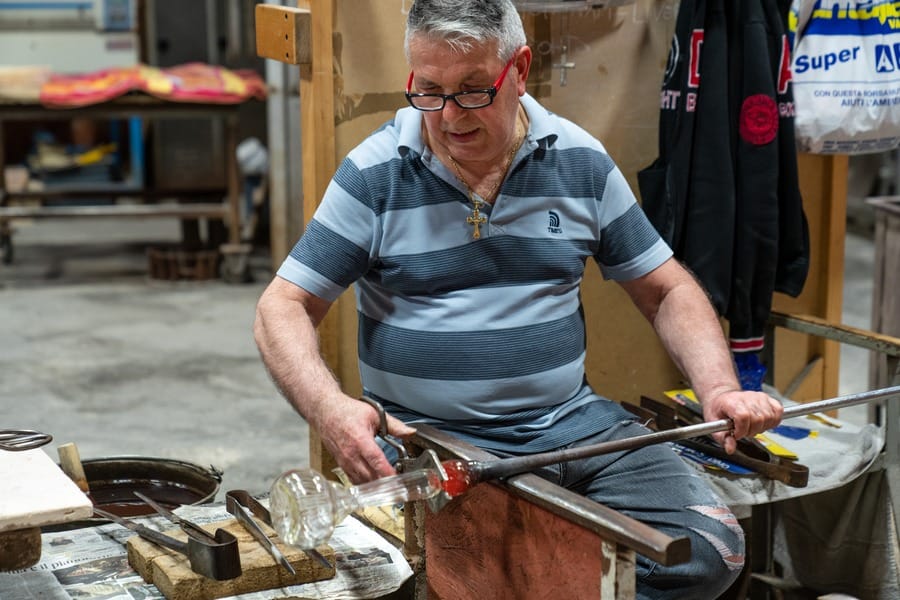
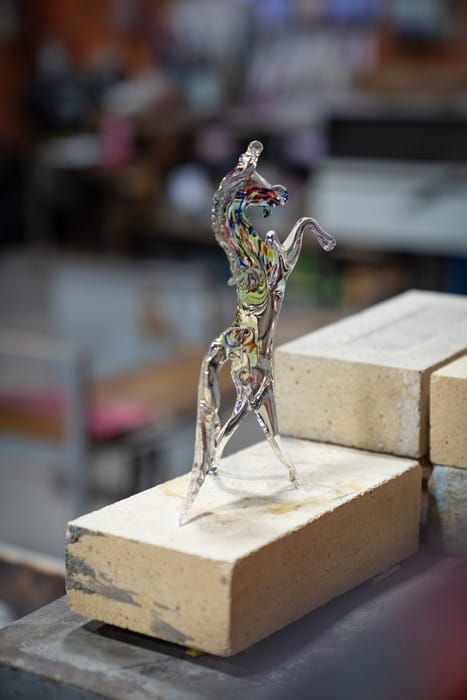
We then toured the factory’s showroom and saw stunning chandeliers, large glass sculptures, and homewares that fully deserve their rather high price tags. If you can’t resist the temptation, staff will offer their best price including shipping to your home.
We briefly stopped by the church of Santa Maria e San Donato before visiting the Murano Glass Museum, which uses the same tickets as the Burano Lace Museum, so be careful not to lose them during the day. Daria left us to explore the museum and glass stores, arranging to meet us at the boat after 1 hour.
The Glass Museum pleasantly surprised me with fascinating exhibits showcasing the evolution of glassmaking on Murano. I found the most interesting exhibit to be small beads with architectural designs and portraits inside. Simply amazing! Next to the exhibits are videos explaining the intricate processes used by glassmakers.
We then made our way back to the boat and returned to Venice around 5:30pm.
5:30pm – Indulge in an Aperitif of Aperol Spritz
After a full day on your feet, relax in one of the many Venetian bars that’s bound to be near your hotel or apartment, and enjoy a traditional Aperol Spritz as an aperitif. As the name suggests, the drink is made with prosecco and orange liquor, Aperol. A refreshing winddown to match an enjoyable day out.
6:30pm – Dinner
I suggest dining at 6342 a le Tole, a popular restaurant specialising in homemade pizza and pasta. Just don’t forget to book a table earlier in the day (or the day before). This can be done via Google Maps.
The Bottom Line
The picturesque Venetian canals place the floating city high on many traveller’s bucket list. Sadly, hordes of tourists make it challenging to enjoy your vacation while straining to hear your companions over the noise or trying not to bump in to people while walking down clogged gauntlet-like streets.
I discovered it is still possible have an authentic Venetian experience by focusing on outlying islands away from the city centre. That is where the authentic culture still lives today.
Sure, take a day to see the icons like Rialto Bridge, but if you have a few days up your sleeve, they’ll be best spent on food-loving Mazzorbo, beautiful Burano, or captivating Murano.
I’m happy to leave the clogged arteries of San Marco for everyone else.































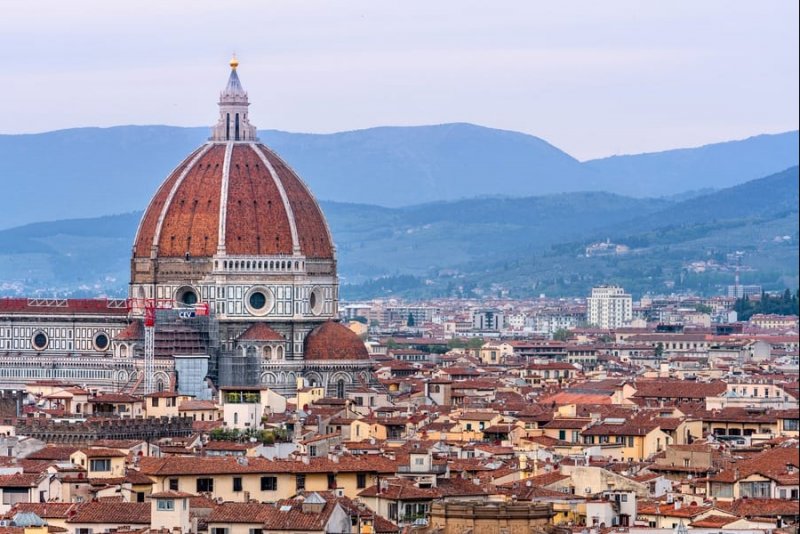








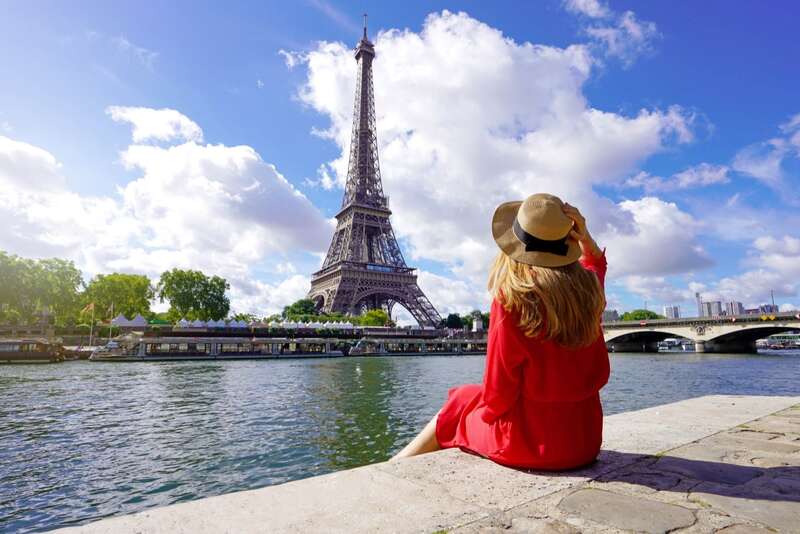

Reader Comments...
"I respond to every comment by direct private email. I look forward to your feedback" - Josh BenderHi, this is very informative and useful blog.
NICE
Nice Blog..!!
Wow 2 days in Venice, spending 48 hours in the wonderful island. Really have to be blessed to have the opportunity to stay 2 days in Venice.
2 days in Venice is not enough! Don't know how anyone could enjoy Venice with that 2 day schedule. And getting around is very easy. The vaporetta is great and inexpensive. Just sightseeing on the waterbus could take up a day. I think you may have short changed the magical city of Venice.
What words... super, a brilliant idea
Write Your Comment
Please DO NOT include links, URLs or HTML in your comments - they will be automated deleted and you will waste your time.